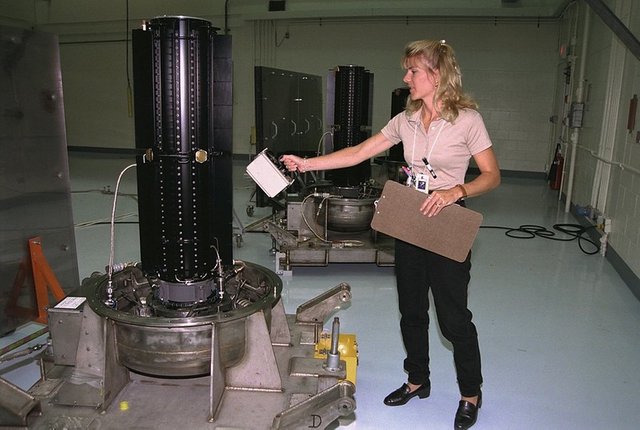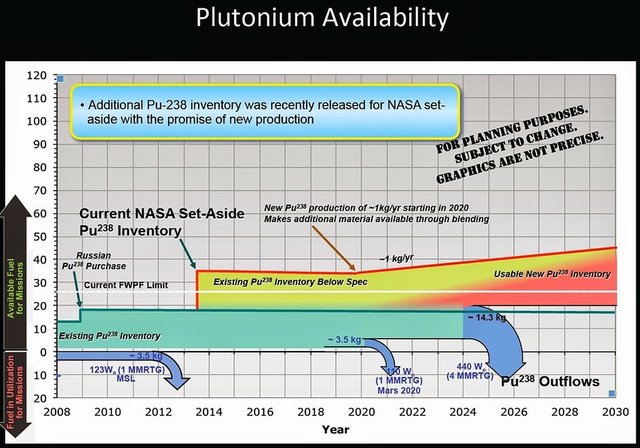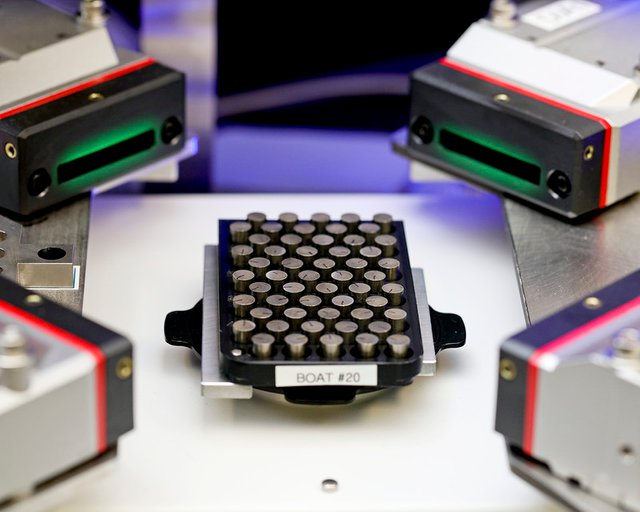For the spacecrafts, exploring outer Solar system use of solar energy becomes inefficient because of low sunlight, and all missions, going beyond Jupiter orbit must use another energy source.
The most commonly used source of heat and electricity in the far space is rare artificial element - Unobtanium Plutonium 238 (do not confuse with Plutonium 239, used in nuclear weapons).
Famous NASA missions Voyager-1 and 2, launched in 1975, were equipped with RTG (Radioisotope Thermal Generator) on Pu238 and are still working. At the launch, electric power was 470 Wt at 30 volts DC, and to the end of 2015 it still had 255 Wt power left. Both spacecrafts will stop functioning in 2025, and it will happen only because the fuel for auxilliary thruster will end and they will not able to position antenna to the Earth.
Cassini also obtains energy from RTGs, it has two on board:

Image: JPL - These are real RTGs for Cassini with shields
The last mission with RTG - Mars rover Curiosity with 4.4 kilograms of Pu238. However, because of supply deficit, next rover - Mars 2020, will have only 3.5 kg.
In the 2000th, NASA purchased Pu238 from Russia, but in 2010 deliveries had stopped. The most obviously, Russia couldn't restore produstion line to this day.

Image: VEXAG 2013-11 Diagram shows NASA Pu238 balance - present day, supply is about 35 kilograms, of them 3.5 kg reserved for Mars 2020 and 14.3 for other goals (probably, military satellites)
Now, US are restoring production line in Oak-Ridge National Laboratory (ORNL).
This is a complex process: preparing pellets from mix of Neptunium 237 oxide and aluminium, loading them into special cassettes, and irradiation in the core of HFIR nuclear reactor for several hundreds hours. During this irradiation, most part of Np237 will decay, but less part will catch neutrons, becoming Np238, with following decay to Pu238. Available quantity of Np238 at ORNL disposal is sufficient to obtain about 80 kg of Pu238.

Image: ORNL mockups of Np237+Al pellets at robotic measuring station
After irradiation, Pu238 is extracted by chemical methods and sent to Los-Alamos laboratory for RTG heat emitting elements manufacturing.
Work with Pu238 is very dangerous and expensive, because of high heat emission and radiation, all plastic details will decay fast in its presence.
There are no prices of course - Pu238 is not on sale, but at the estimates, its cost may be several million dollars per kilo.
In the last news, ORNL has shown the new measuring station for measurement of Neptunium pellets. It is robotic - Np237 is radioactive.
Now ORNL is producing Pu238 at 0.1 kg/year, but after installing this station, production will be raised to 0.4 kg/year.
Meanwhile, RTG, while proven and robust system, has too low efficiency. For large scale space exploration, more complex systems are needed - compact nuclear reactors.